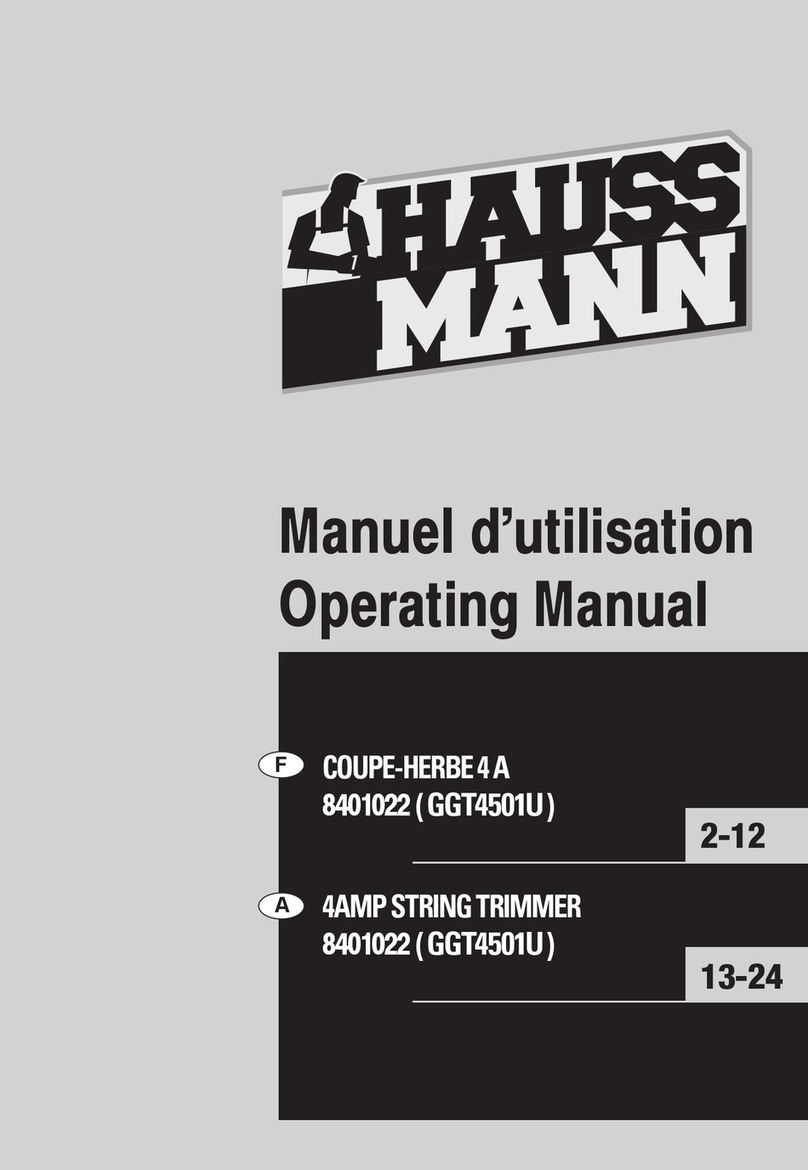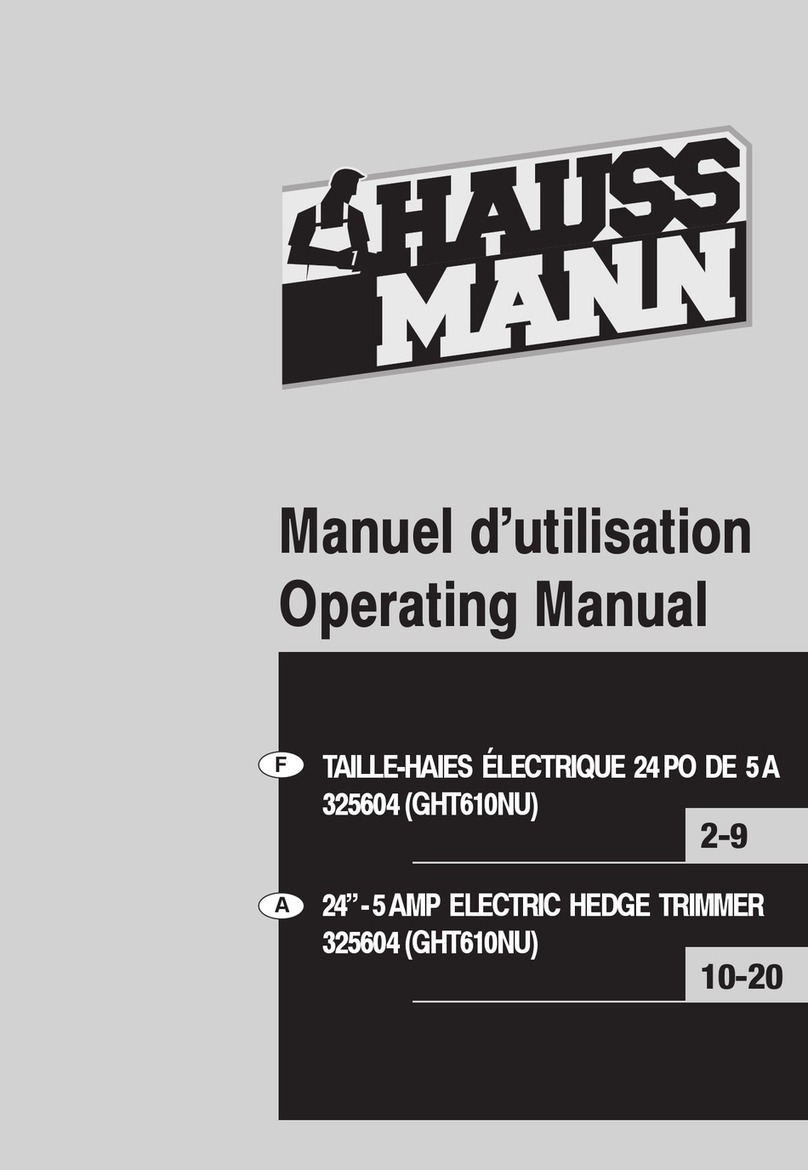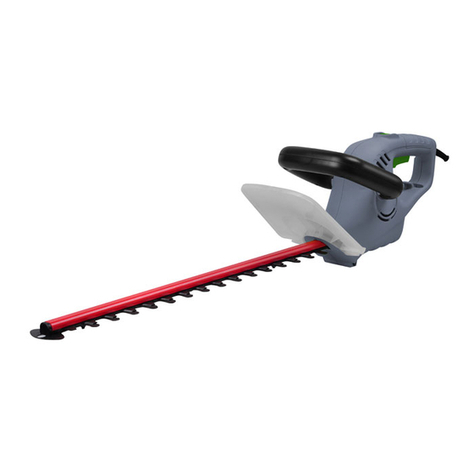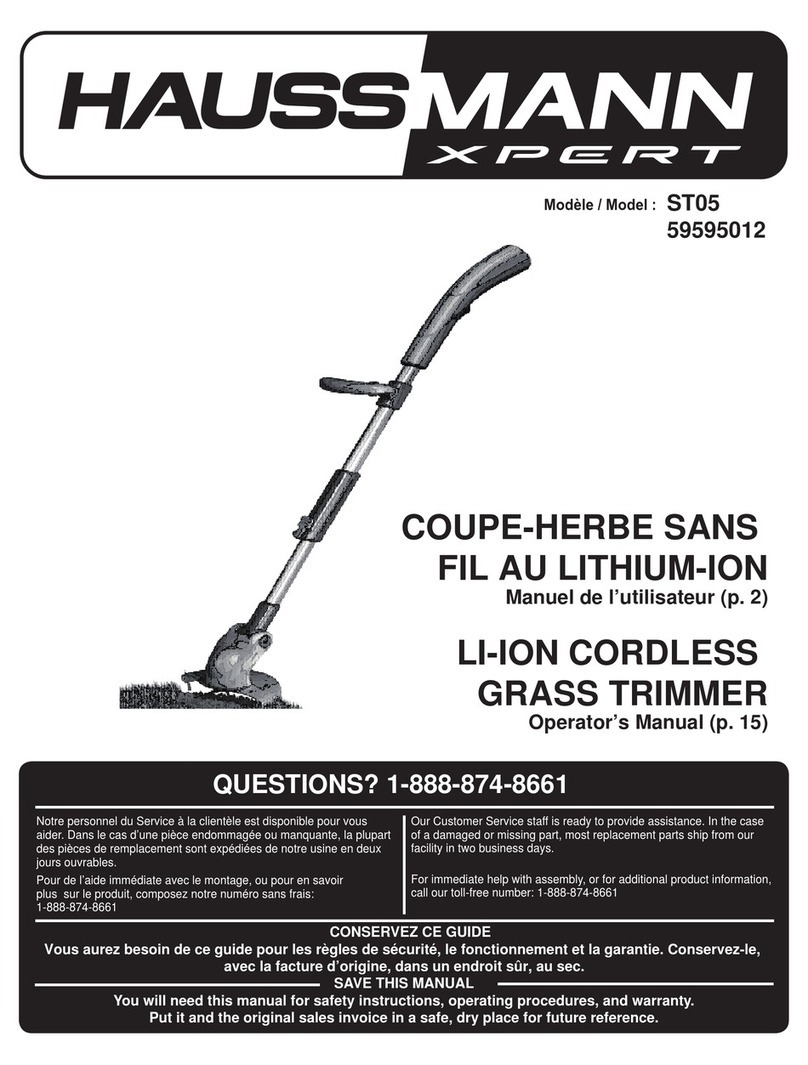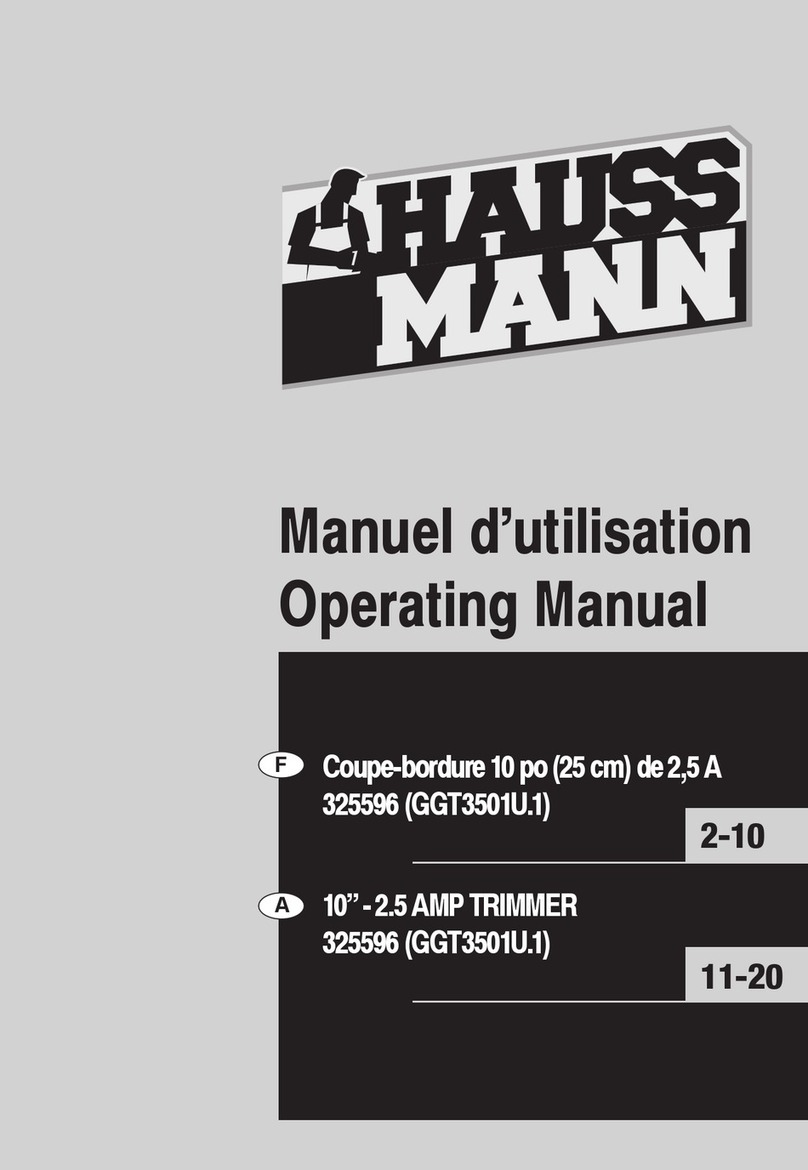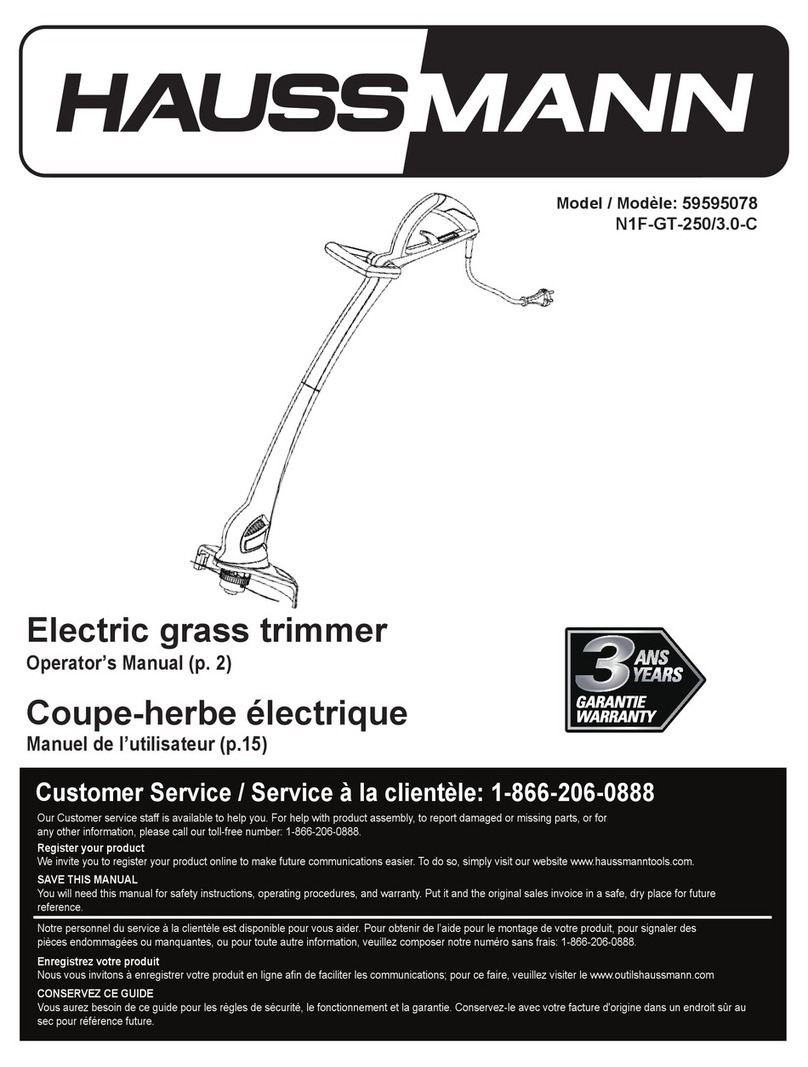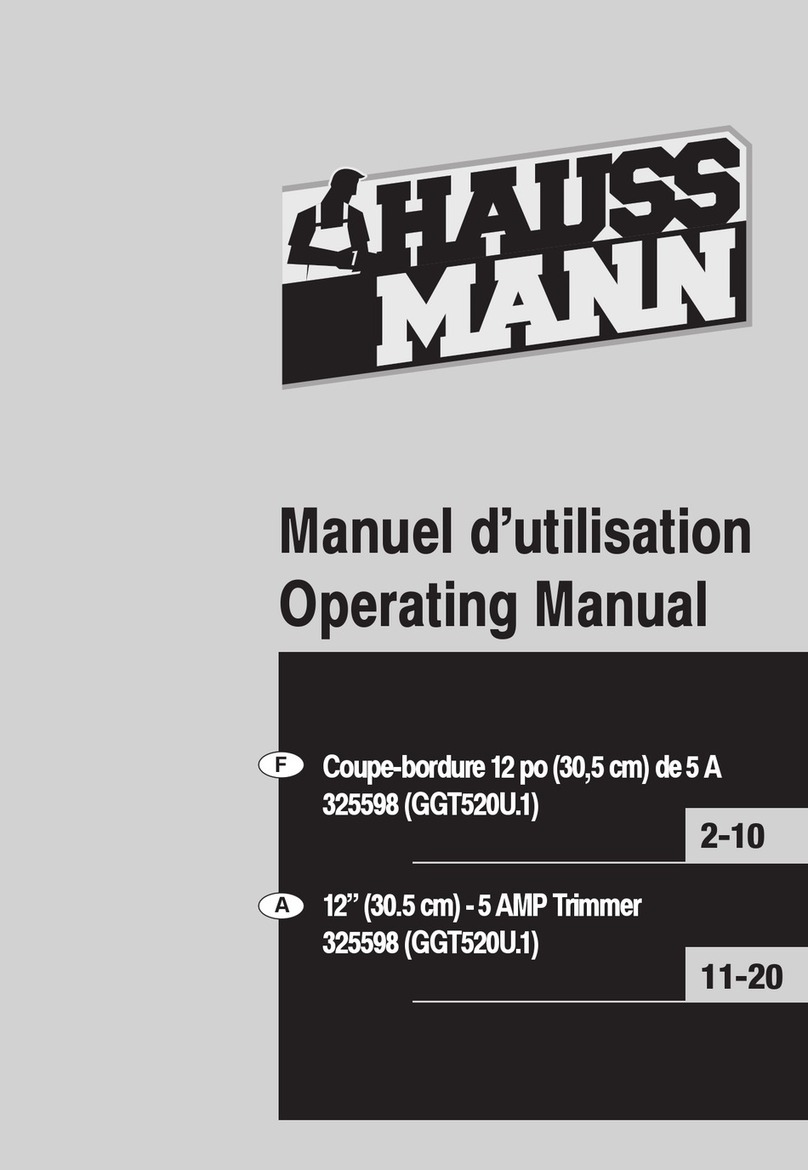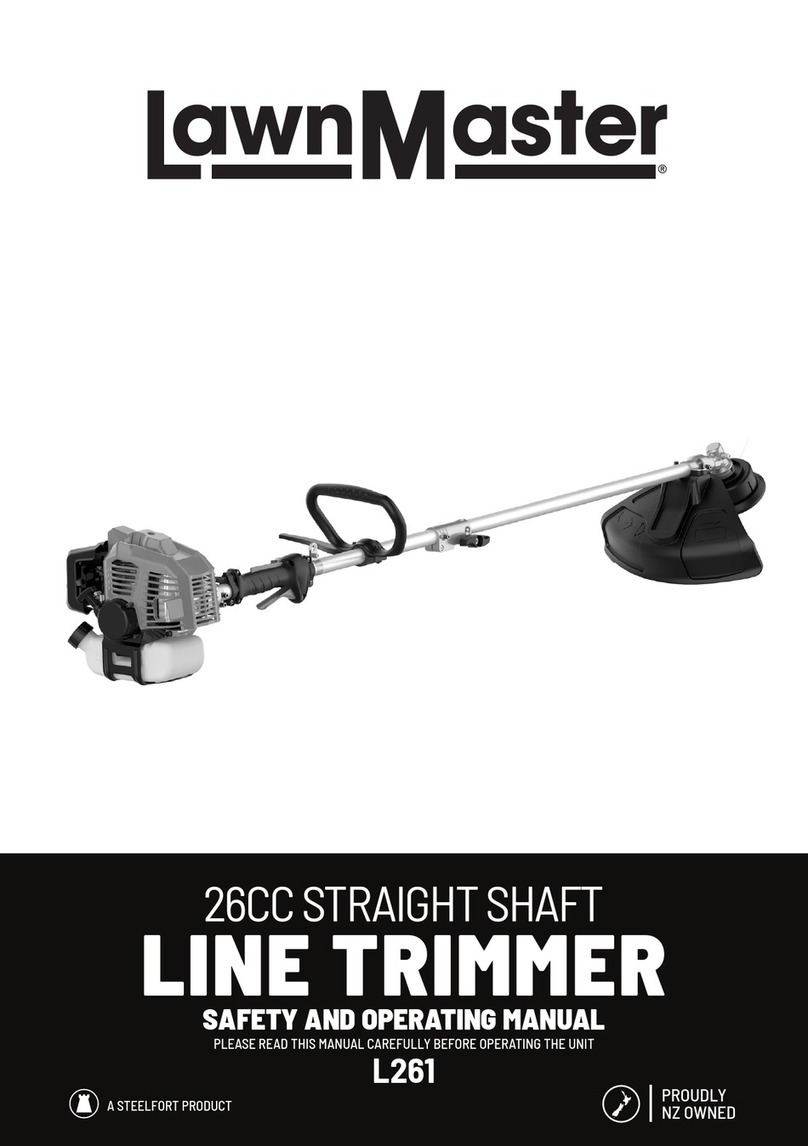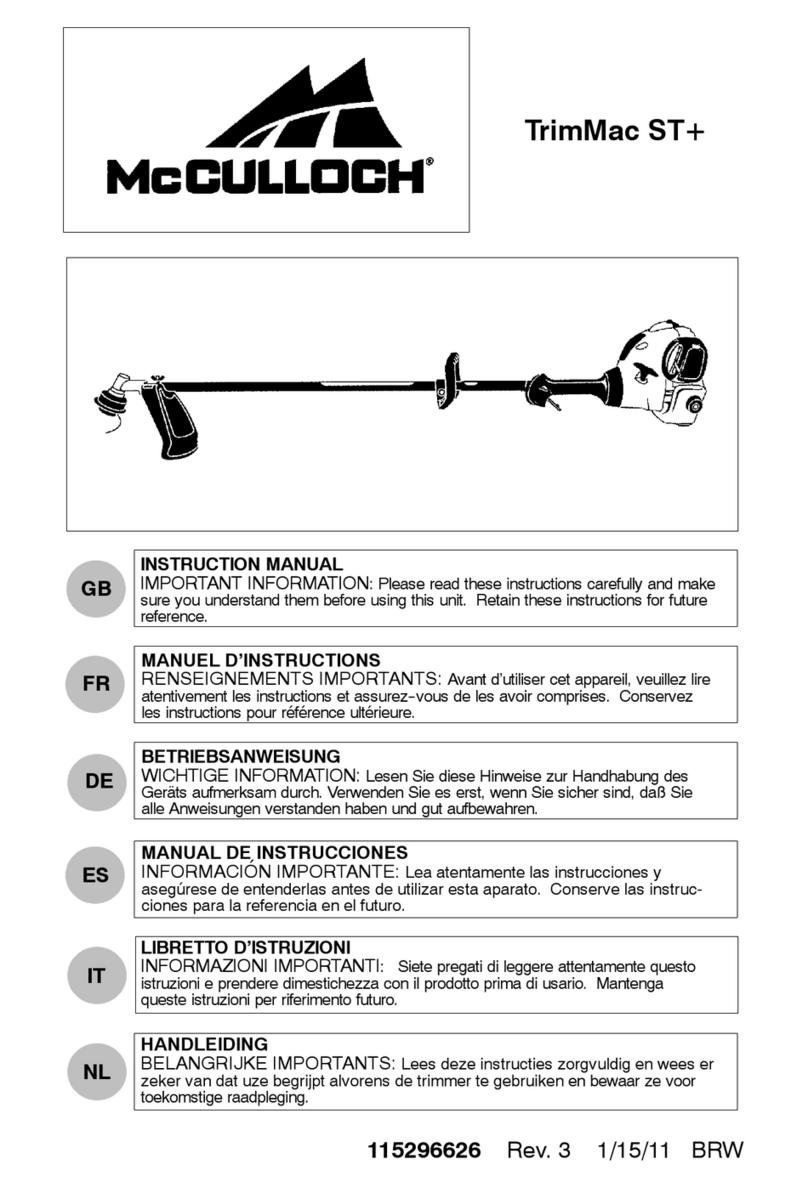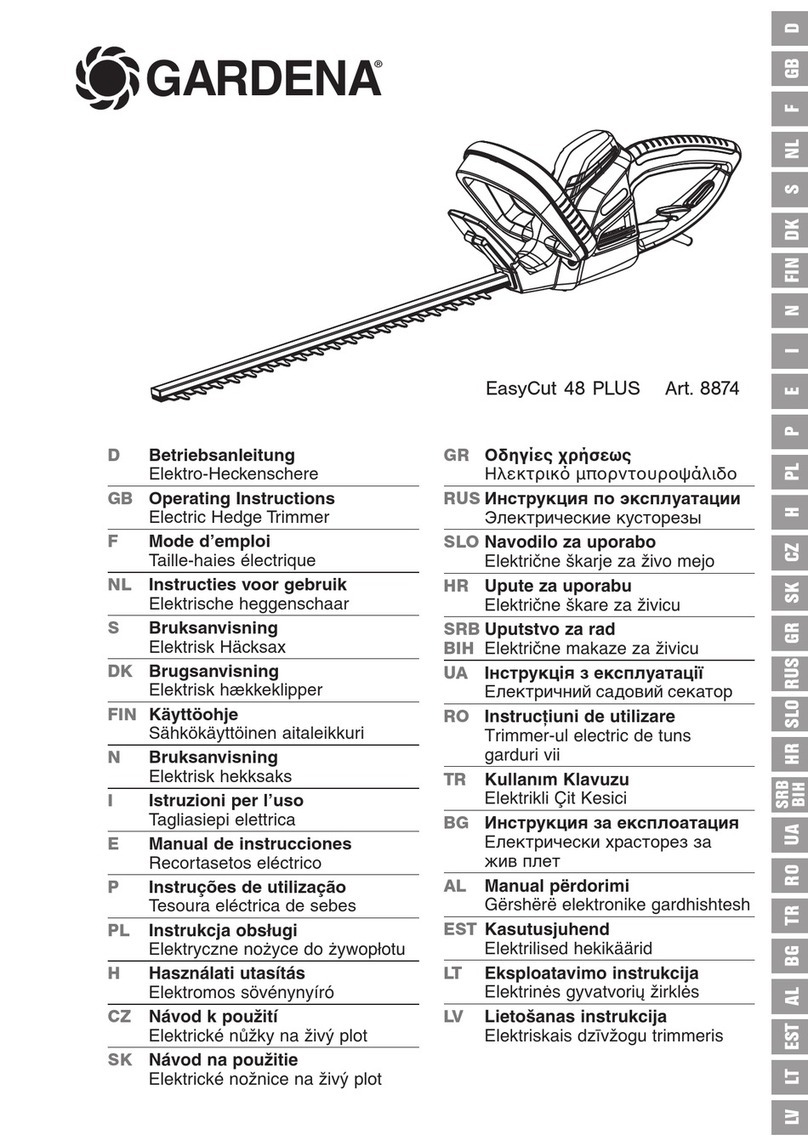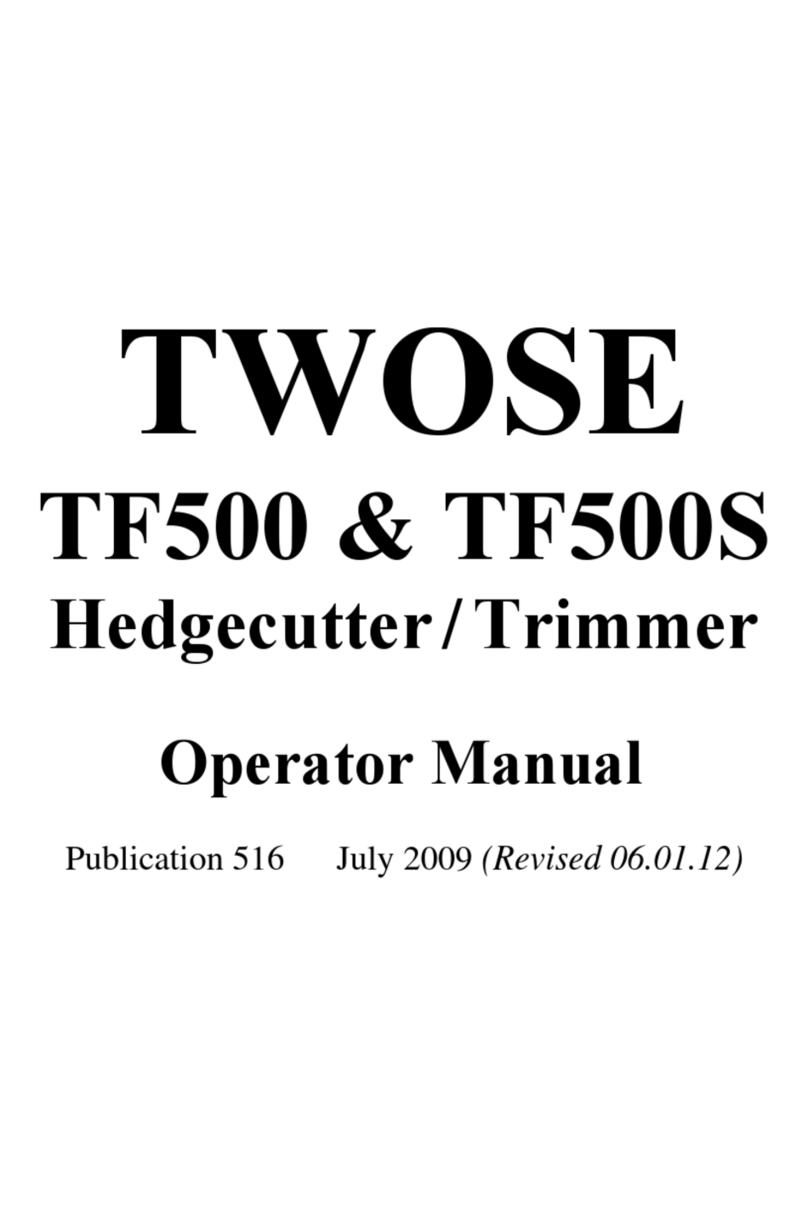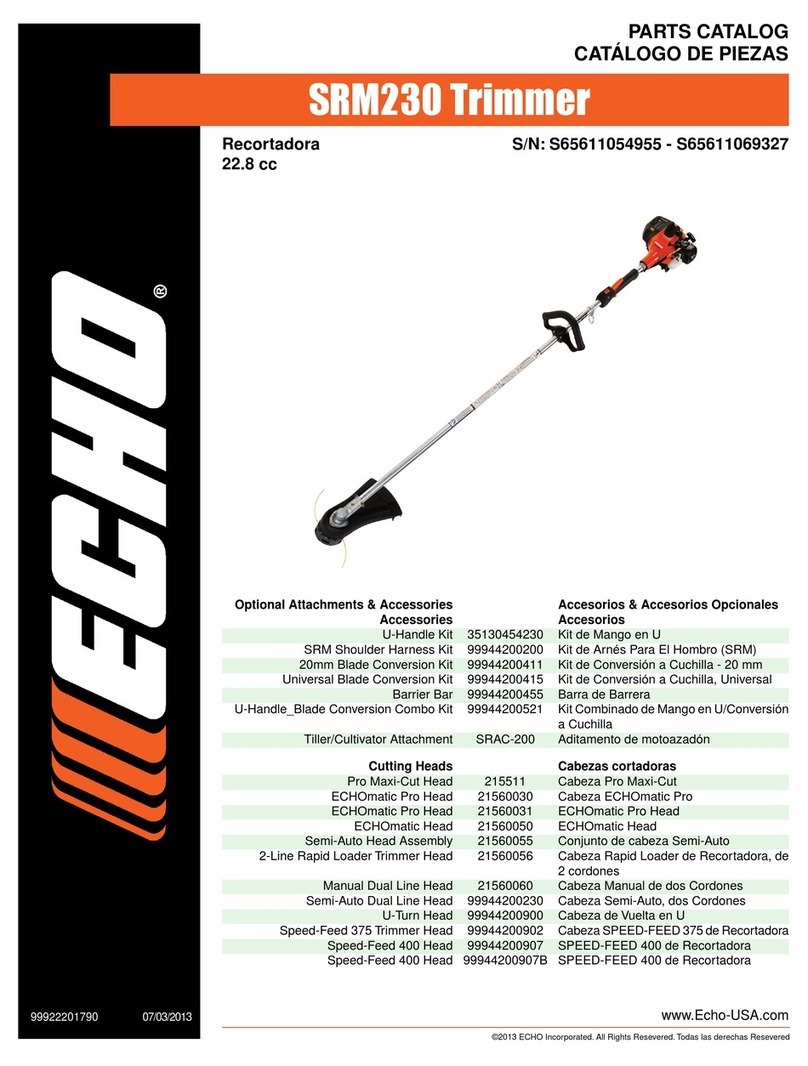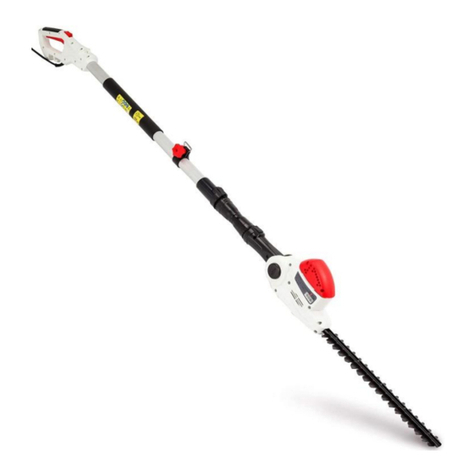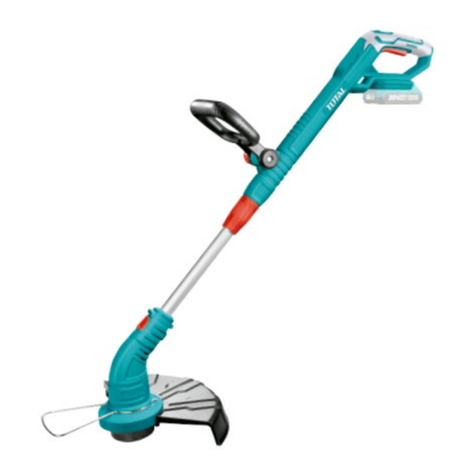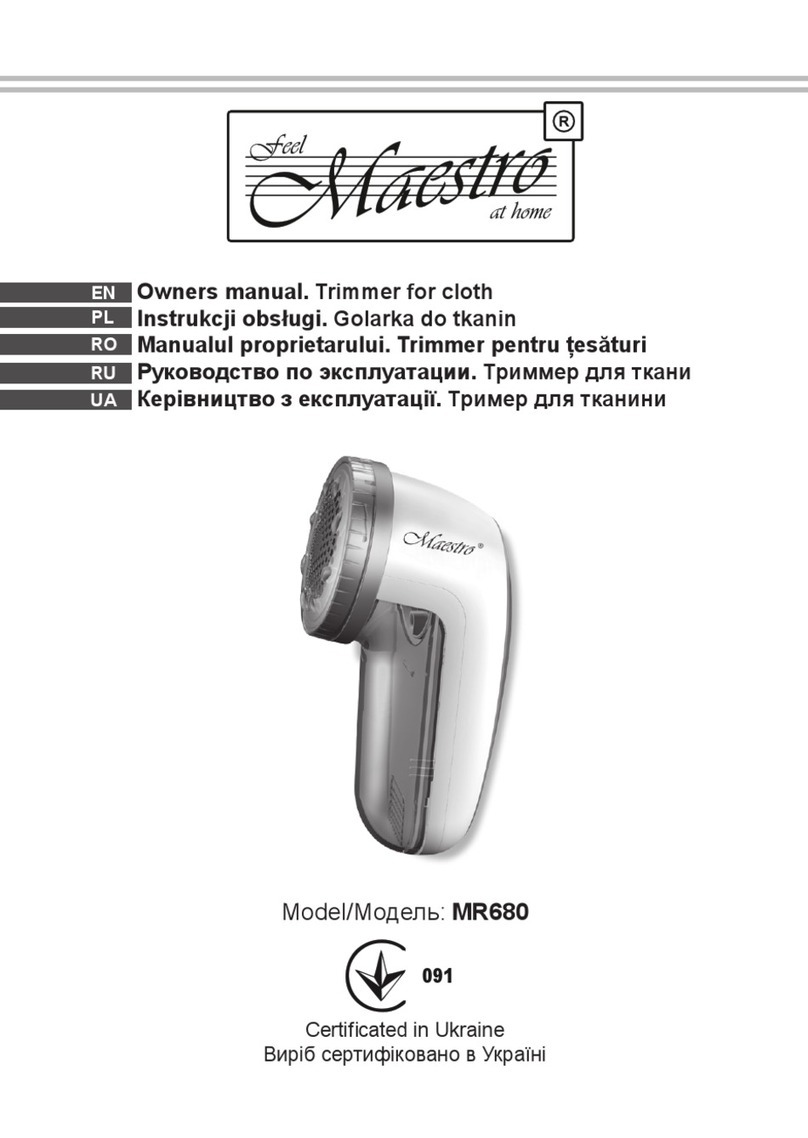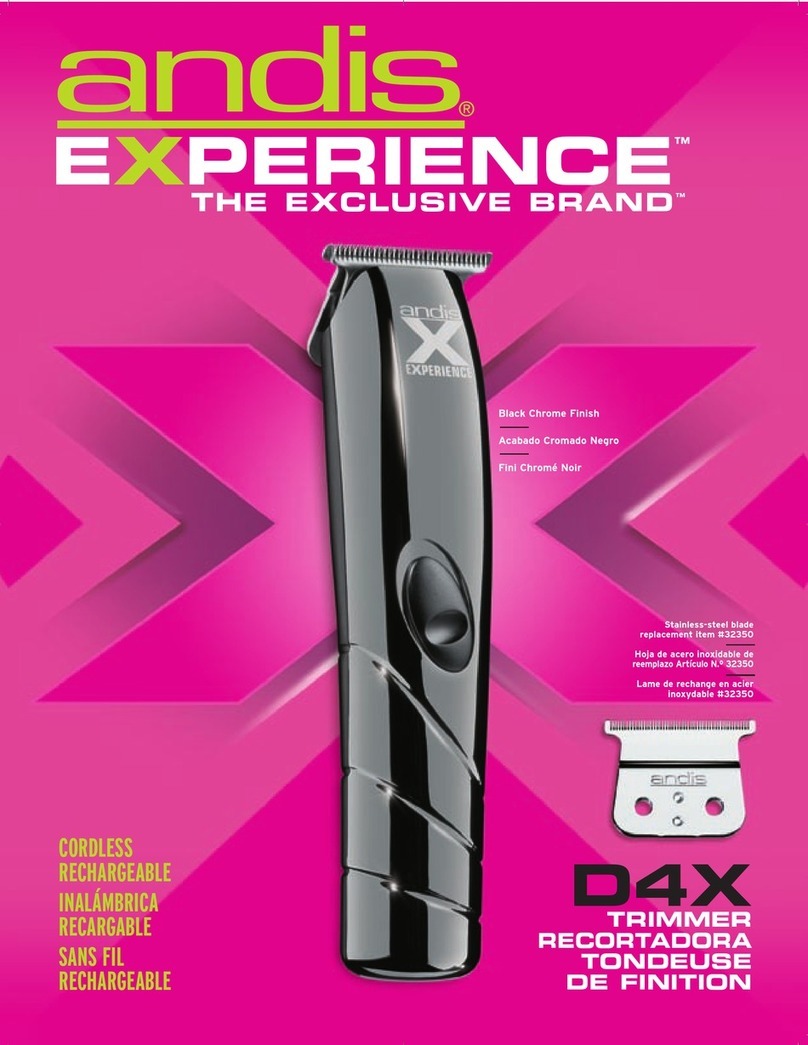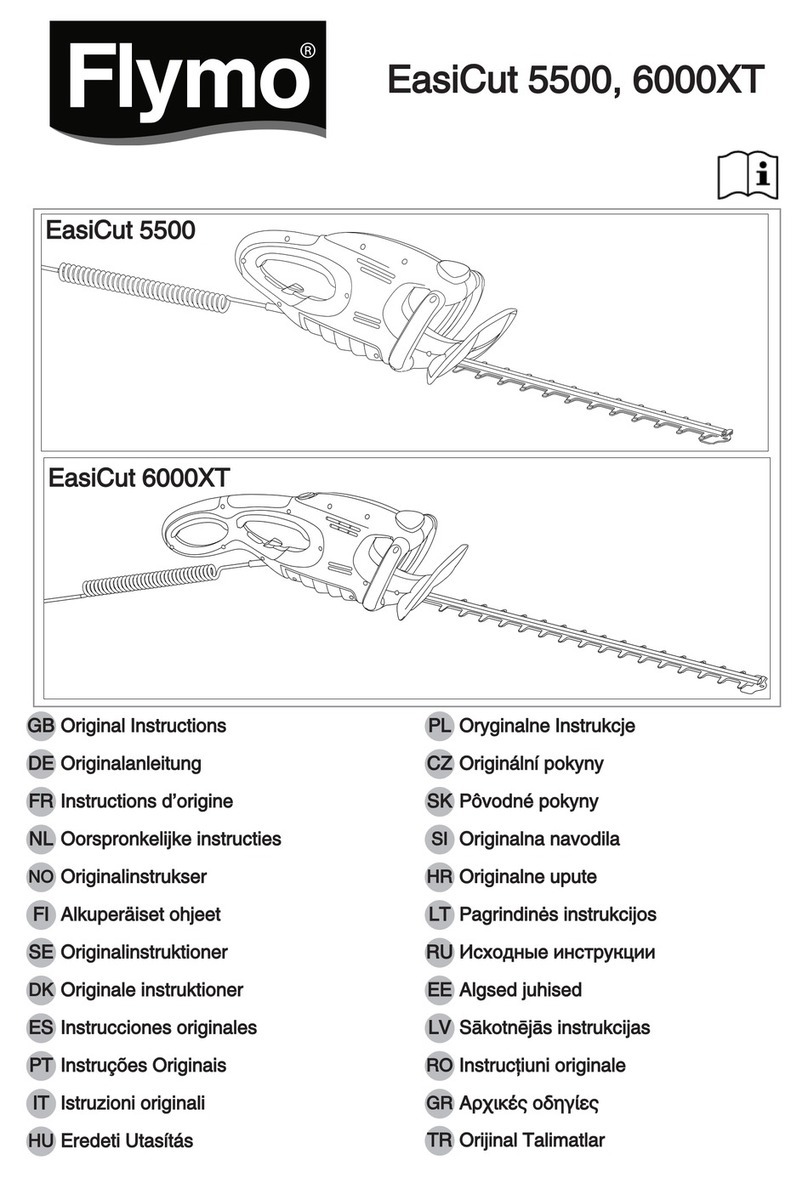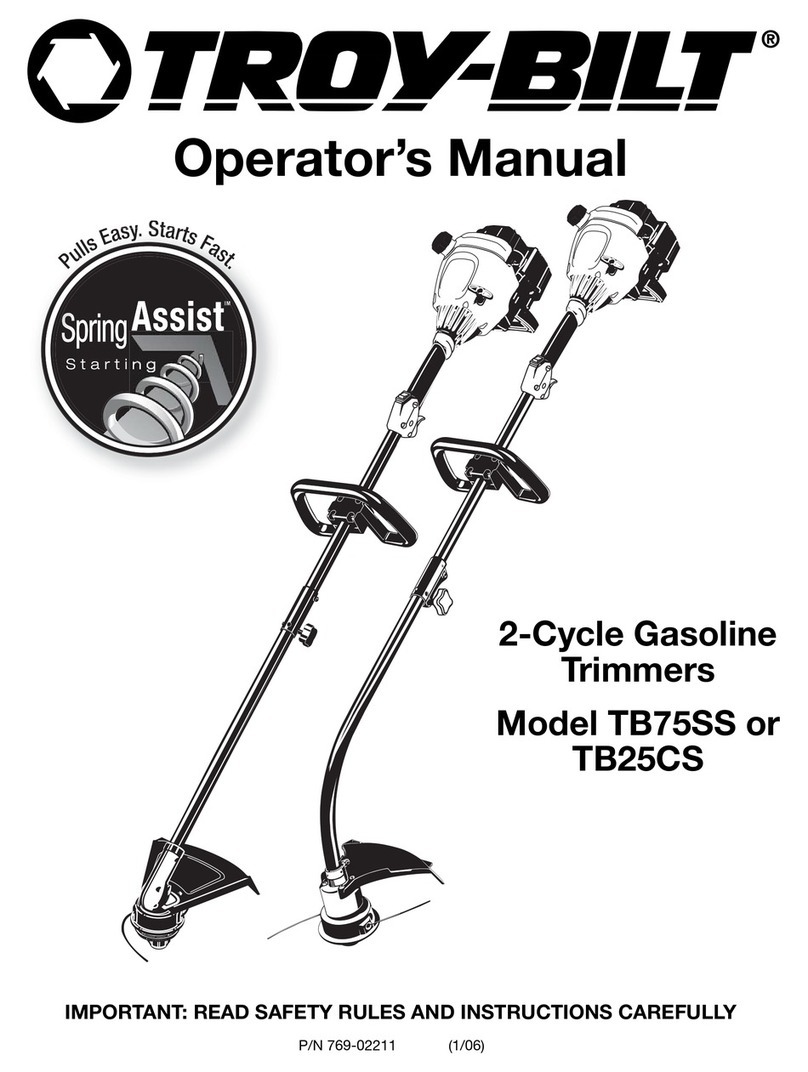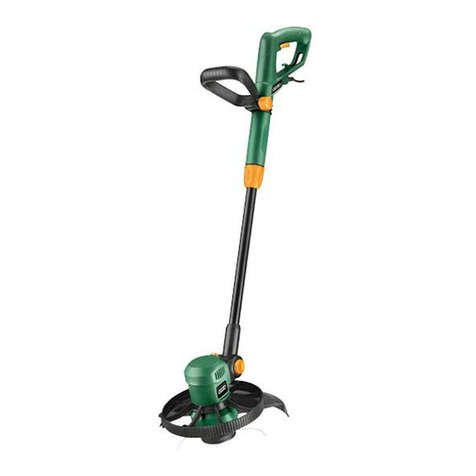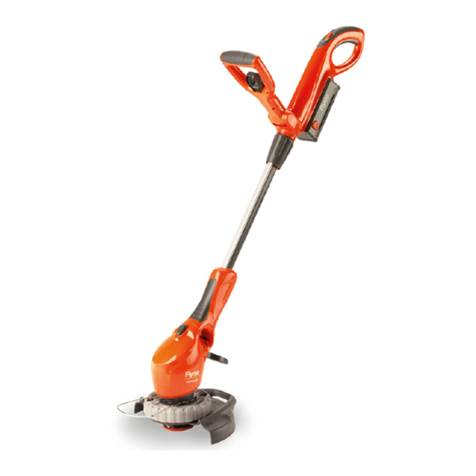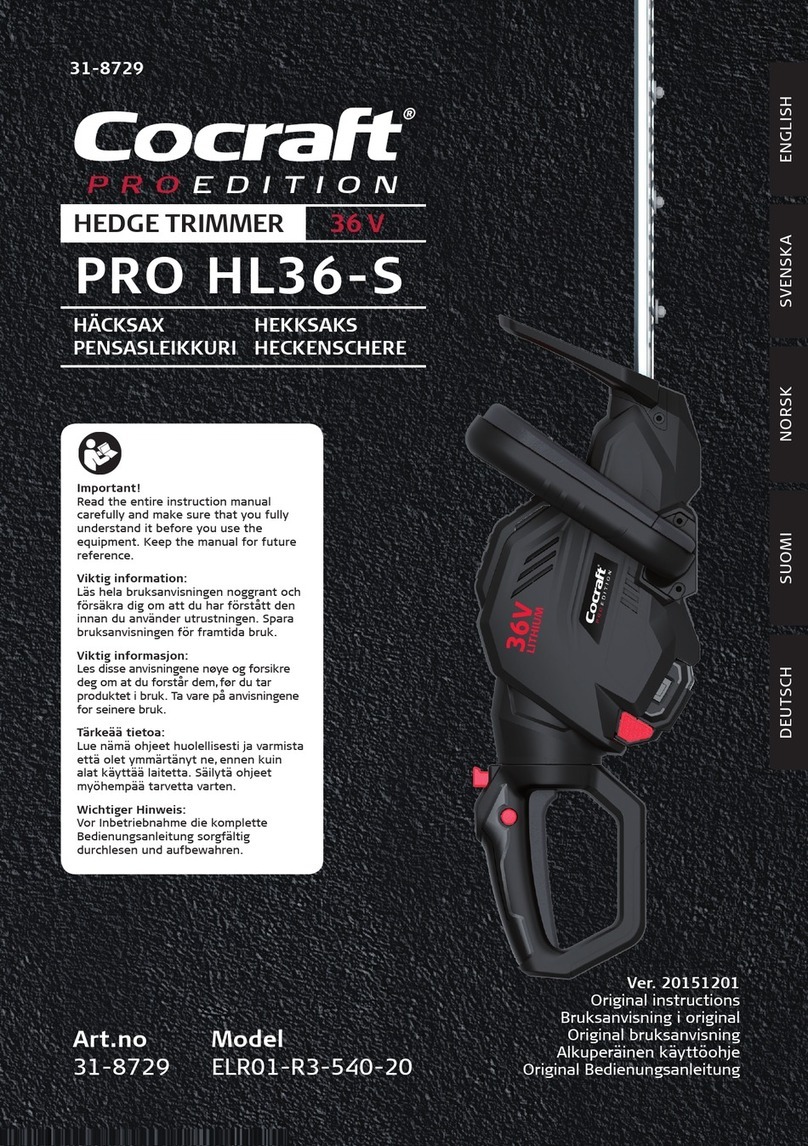
ENGLISH
and nonskid footwear are recommended when working outdoors.
Also wear protective hair covering to contain long hair.
g) Protect your hearing. Wear hearing protection during extended
periods of operation.
h) Keep hands and feet away from the cutting area.
4. Operator Safety
a) Wear protective glasses or goggles.
b) Never allow children or people unfamiliar with the instructions
to use the machine.
c) Stop using the machine while people, especially children, or
pets are nearby.
d) Only use the machine in daylight or good articial light.
e) Before using the machine and after any impact, check for
signs of wear or damage and repair as necessary.
f) Never operate the machine with damaged guards or without
the guards in place.
g) Keep hands and feet away from the cutting head at all times.
h) Take care against injury form any device tted for trimming
the lament line length. After extending new cutter line always
return the machine to its normal operating position before switching
on.
i) Never t metal cutting elements.
j) Never use replacement parts or accessories not provided or
recommended by the manufacturer.
k) Always ensure that ventilation openings are kept clear of
debris.
5. Battery Safety Rules
a) Do not charge battery in rain or in wet locations.
b) Do not use battery-powered appliance in the rain.
c) Remove or disconnected the battery before servicing,
cleaning or removing material from the gardening appliance.
d) Do not dispose of the battery in a re, The cell may explode.
Check with local codes for possible special disposal instructions.
e) Do not open or mutilate the battery. Released electrolyte is
corrosive and may cause damage to the eyes or skin. It may be
toxic if swallowed.
f) Exercise care in handling batteries. Not to short the battery with
conducting materials such as rings, bracelets and keys. The
battery or conductor may overheat and cause burns.
g) Be aware of your working environment. Batteries can explode
in the presence of a source of ignition, such as a pilot light. To
reduce the risk of serious personal injury, never use any cordless
product in the presence of open ame. An exploded battery
can propel debris and chemicals. If exposed, ush with water
immediately.
h) Do not crush, drop or damage battery pack. Do not use a
battery pack or charger that has been dropped or received a sharp
blow. A damaged battery is subject to explosion. Properly dispose

